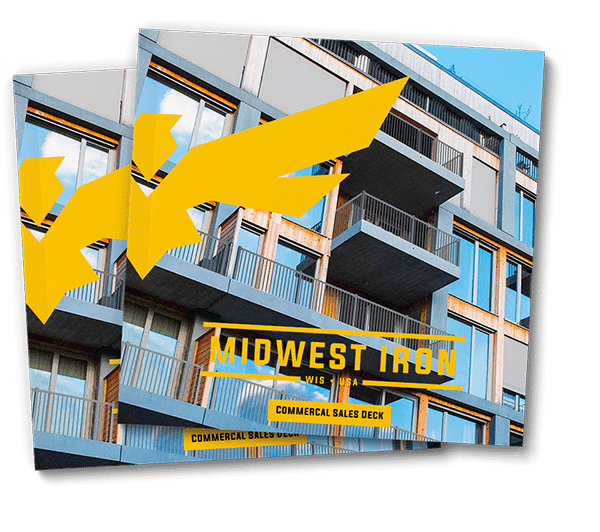—What Expertise is Required for Misc Metals?
Misc metals often requires engineering, forward thinking, and customization. This area of steel construction requires small picture thinking, as we have to hunt and peck through drawings so that nothing goes amiss. To be an expert in misc metals, you have to know your own metals trade plus how your trade impacts others. This is because misc metals are often the components used to support masonry, carpentry, and structural supports.
—What is the Construction Impact of Misc Metals?
Misc metals are the building pieces that can be small, numerous, and appear to be insignificant such as embeds, lintels, metal support structures, etc. Most people are unaware of the impact of misc metals, but you would sure know it if they were missing. Their smallness compared to building size is quite significant. Midwest Stairs & Iron takes care of all these misc metal pieces and more for one all encompassing metals package.
[/et_pb_text][/et_pb_column][/et_pb_row][et_pb_row column_structure=”1_2,1_2″ padding_mobile=”off” column_padding_mobile=”on” _builder_version=”3.25″ background_size=”initial” background_position=”top_left” background_repeat=”repeat”][et_pb_column type=”1_2″ _builder_version=”3.25″ custom_padding=”|||” custom_padding__hover=”|||”][et_pb_text _builder_version=”3.27.4″ text_font=”||||||||” text_font_size=”20px” text_line_height=”1.5em” background_size=”initial” background_position=”top_left” background_repeat=”repeat” use_border_color=”off” border_color=”#ffffff” border_style=”solid”]Misc metals require detailed thinking. All of these misc metal pieces were customized for the Potawatomi Bingo Casino Hotel construction project to meet certain engineering and design requirements:
- 3 Stair Towers
- Podium
- Ships ladder
- Elevator pit and roof access ladders
- Dock leveler galvanized edge angle and embed
- Slab support edge angles tied into masonry wall system
- Bollards
- Stair nosing
- Embed and bearing plates
- Edge angles for stairs
- Elevator trench grates and frames
—What makes us experts?
Structural steel companies usually hate misc metals because it takes a lot of time, resources, and focus to get it right. What makes us experts? Misc metal estimating goes beyond price per pound and lengths. You have to know a lot about many construction elements to get it right, as misc metals are often the elements that tie everything together. You also have to know how to find what’s hidden on architectural drawings, as architecturals don’t usually indicate the intricate connection details (especially during conceptual phases.)
Have a project or an idea? Please reach out!
COMMERCIAL PROJECTS ONLY
support@mwstairs.com
PHONE
414 483 2890


